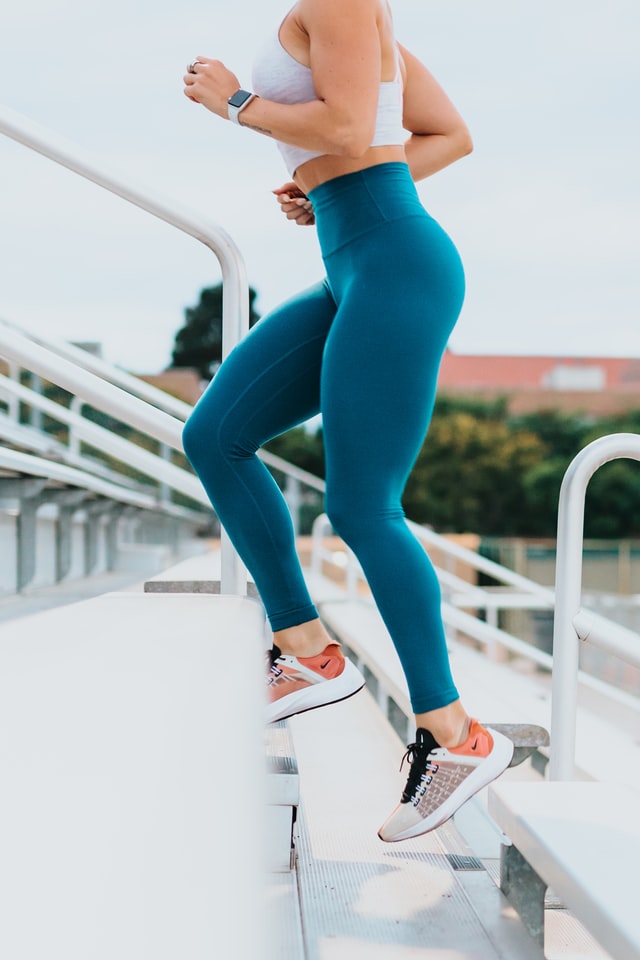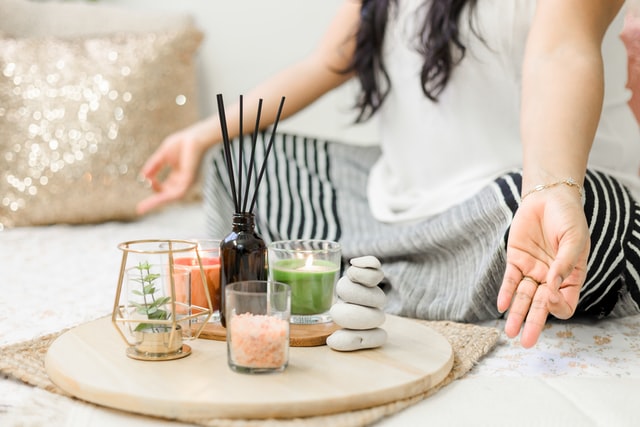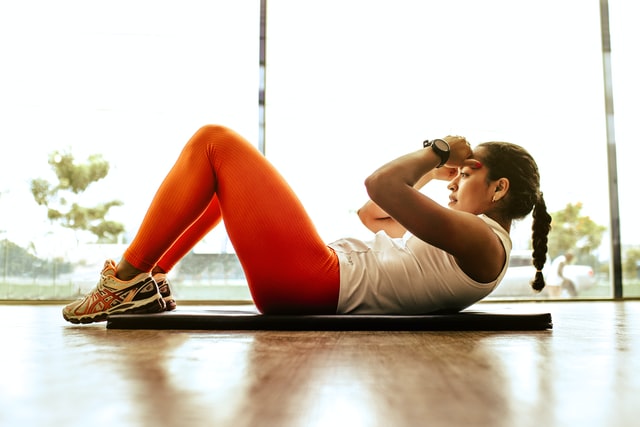This blog post is all about age, fitness, and how to maintain it in your 30s.
When you reach your thirties, so many things change. You have more responsibilities at work or with kids. It’s harder to find time for the gym during the week when you are working 40 hours a week outside of that hour-long commute every day!
As women enter their thirties, they may not be as active as before because life can get busy–but I’m here to help you.
It’s never too late to get in shape and know what your body needs. It may not be as easy when you enter your thirties, but it is possible!
Join me for this blog post where I share how you can be healthy and fit at any age.
Reasons It Is Hard For Women Over 30 To Lose Weight
It’s easy for women to lose weight in their 20s and 30s, but it gets more challenging as they age. There are many reasons this is true; however, understanding muscle metabolism and not falling prey to fad diets can help you remain fit during your 30s. Women in their 30s are more likely to put on weight due to various factors, including hormonal changes and new responsibilities. But with some smart weight loss tips for women over 30-time and energy-they can stay motivated while staying healthy.
In her 30s, women have to deal with a lot of changes in their bodies. In addition, the pounds will start dropping off when they forgo fad diets and get organized. A few things that can help you include:
- Eating smaller meals throughout the day instead of three large ones
- Having more protein shakes during your daily routine
- Having a set workout schedule
- Opting for stretching and yoga instead of weight-lifting can help you maintain a strong back.
Don’t Make These Mistakes
Many women in their 30s are making the mistake of thinking that they’re too old to exercise. However, this misconception is not valid. There are many health benefits associated with exercising at any age!
Don’t forget to think about your muscle mass
At age 30, humans lose muscle mass. It’s the reality even if someone is active. Aerobic exercise may reduce your risk of Alzheimer’s and some forms of cancer, but women in their 30s should also make time for strength training.
Strength training is vital for women of all ages, especially those in their 30s, because it rebuilds and strengthens muscles. Women should incorporate strength training into their exercise regimen to maintain healthy body weight and avoid injury.
Researchers at the University of Southern California found that women who lifted weights two to three times a week gained strength and lost body fat. They suggest weight-bearing exercises, such as squats or lunges, to help maintain bone mass.
Don’t ignore your metabolism slowdown
A metabolism slowdown happens as we age, and people who are overweight or obese often experience it. It’s a gradual slowing of the metabolic rate, which means our bodies aren’t burning calories as efficiently. This can significantly impact our health, so it’s important to start trying to lower your weight and get more active now.
It is common for metabolism to slow down as women age, but there are ways to reverse this. Women can increase muscle mass by performing resistance training exercises and intense exercise sessions. The added benefit of muscle mass is that it will help maintain a healthy metabolism up into your 30s or 40s.
Don’t miscalculate fertility
Women in their 30s should be wary of the symptoms of declining fertility since this is typically when women are born with eggs that have decreased quality. Women in their 30s can also make mistakes when calculating how long they will take to conceive.
Additionally, women in their 30s are at a higher risk for pregnancy. Many will get pregnant by the age of 40 and should be mindful about when they have children.
You don’t make time to see the doctor
According to the American Heart Association, women in their 30s should get a cholesterol screening every five years. It is essential because it includes total cholesterol, LDL levels (the so-called “bad” cholesterol), HDL or “good” cholesterol levels, and triglycerides.
If all is good, you don’t have to have another test for about five years. But if your numbers aren’t stellar, you and your doctor can work out a plan that includes diet, exercise, weight loss, and sometimes medication.
Don’t treat your skin like you’re still in your 20s
The 30s are a tough time for women. The skin is more prone to acne, the body changes with age, and some of the beauty products that worked in your 20s might not work as well now.
The key to staying healthy during this time is taking care of yourself by maintaining a healthy diet and exercising regularly.
It’s becoming harder for women to find products that work well on their skin because they’ve been using harsh chemicals in their 20s without realizing it. The best thing you can do is be gentle when treating your acne and use products that don’t strip oils from your face.
Fitness tips and best weight loss plan for women in their 30s
A woman’s best weight loss plan for her 30s is to change her lifestyle and diet. Life is busy, so fad diets are not sustainable. Women over the age of 30 should make changes in their lifestyle to lose weight.
Full-body workouts
In their 30s, women should start incorporating full-body workouts into a regimen. Full-body exercises can help to keep muscles strong and tone the body.
Full-body workouts are a great way to achieve a wide range of benefits in one session. However, people often make mistakes such as focusing on the part of their body or not engaging all muscle groups during exercises like HIIT and push-ups.
While it may be challenging to squeeze in a full-body workout every day, these guidelines will help you find what works for your schedule:
- Have full-body activities on Mondays, Wednesdays, and Fridays.
- On Saturdays, have an active swimming day.
- Try to have yoga exercises every day as they can be done any time of the day or night.
Yoga has been proven to have multiple benefits. It is a low-impact activity that you can do for short periods or longer sessions with breaks in between. Yoga poses are considered the most beneficial when you do them daily or at least once per week.
Weight training
Strength training is good for reducing stress, improving cognitive ability, and many other benefits. It’s essential to include strength training into your workout routine a few times a week.
Strength exercise is one of the most common types of exercise, but it’s also a misconception that only men and bodybuilders would be interested in this type. There are many different variations of the strength workout to try out, depending on your fitness level.
To stay healthy and improve the quality of their lives, all people should do strength training. Women in their 30s will notice changes in their bodies as they age, and weight loss is not as easy. Focus on full-body exercises instead of targeting specific areas like glutes, abs, or chest.
To start weight training, you need to be reasonably fit. You should also know the difference between a compound and an isolation exercise and how to make a proper set and rep scheme.
To build a proper weight training routine, you’ll need a good strength base to support your muscles. You can gain that through compound exercises, such as squats and deadlifts.
I believe that weight training is the key to feeling great and staying healthy in your 30s, and you can do it without any equipment or gym membership.
Proteins
Protein is needed throughout your life. Women in their 30s are undergoing age-related muscle loss, which means they need to eat more protein to prevent physical decline. You can also try to space out your proteins during the day instead of eating most at dinner time.
In your 30s, you might start cutting out sugar and oil from your diet. To replace these sources of calories, protein-rich foods such as eggs, dairy products like milk or yogurt, legumes (beans), and nuts are good options. If time is short in the morning for breakfast, but you still want something filling to help jumpstart your day with essential nutrients, then there are plenty of low-calorie shake recipes that can be made quickly using ingredients found at home.
Fibers
Fiber-rich foods are the best way to help you eat less. Fiber-rich foods will maintain your weight, and it’s a win-win for eating healthy and losing weight.
Fiber is a carbohydrate that the body requires to function correctly. You can find it in whole grains, beans, nuts, and fruits. Ladies are advised to consume 25 grams of fiber per day when turning 30 or above.
Continuous progress
The gradual process of exercise will help women to avoid any injury. Start small with exercises that are manageable for you. Then work your way up to 30 minutes of fitness activities per day, three days a week.
The increase to 15-20 days of workouts a month should be done under the guidance of professionals and slowly as it is not advised for those who are already sedentary or out of shape.
Don’t fall for the yo-yo diet effect
It is essential to be careful not to become a yo-yo dieter. Women in their 30s should have a fitness plan that they can stick with long term, and it’s also important to get enough sleep.
Weight loss is not important in the 30s. Health is what matters most, and you should focus on core work when trying to lose weight. Eating lean meat, lean fish and vegetables, fruits are all excellent choices for a healthy diet.
Work on your back exercises
People who are experiencing back pain should work on strengthening their glute and core muscles. Yoga or Pilates can be helpful for flexibility, as well as reducing pressure on the back by stretching it out.
When you lift a weight, your back muscles work hard to help support the weight. Maintaining good form for this exercise is vital, and not letting your back muscles relax too much.
You should adjust the lower back and glutes exercises to build up and strengthen your back and butt muscles. Women in their 30s should know how to do a B-O-O-M exercise, which is a “back extension” move that strengthens your upper body and builds up your core/abdominal muscles.
Get adequate sleep
Although sleep and weight loss go hand in hand, the average person should be sleeping for 8 hours a day. More awake time will result in more food consumption which leads to increased daily calorie intake.
Although 7-8 hours of sleep a night results in higher productivity during the day, people with 9 or 10 hour sleeps tend to have less energy throughout their days because they are not getting enough restful deep REM cycles that contribute to health and wellness.
Eat more healthy food
It is essential to eat healthy food options and drink lots of water. In addition, eating more fiber-rich foods will help your body stay hydrated. You can also increase the amount of vitamin-packed foods that you consume to improve your diet and overall health.
Protein will also help maintain a healthy metabolism, while you should limit sugar intake as it can cause energy dips and satiation issues.
Limit your daily calorie intake
There are a few things that women in their 30s should focus on when it comes to fitness. The first is reducing the number of calories you take each day, and the second is losing weight before going past the age of 30 or so. Alcohol consumption is not recommended for people trying to lose weight over this age range because alcohol slows down your metabolism and makes it harder to reach your goals.
Cutting your daily calorie consumption is a great way to help you lose weight. If you want to reduce the number of calories in your body naturally, it’s best to start by changing one habit at a time and then gradually add more changes.
Drink a lot of water
Drink a lot of water to stay hydrated and avoid dehydration, leading to serious health problems. Drinking water before eating can make you feel full without feeling hungry, which is excellent for people who always feel hungry. Women in their 30s may find themselves struggling to lose weight or constantly gaining it, but this doesn’t mean that there isn’t a way out.
Manage stress
Sometimes you want to drown your stress in carbs between relationship woes, children, work, and family obligations. This leads to the body storing excess sugars in fat cells, and overloading the body with sugar and insulin results in fat storage over time. After a certain point, this could lead to pre-diabetes or type II diabetes.
Stress is a natural response to life’s struggles, and there are many ways for people to manage their stress. Some of these methods include exercise, healthy eating habits, practicing good sleep hygiene, and meditation.
FAQ
How can I build muscle in my 30s?
A lot of people struggle to build muscle as they age, but it is possible. Here are a few tips to help you stay motivated and get the most out of your workouts:
1. Have a goal – This will help you stay motivated and on track with your workouts and keep you from getting bored.
2. Eat protein every day – Protein is the building block of muscle, so you must incorporate it into your diet as often as possible.
3. Rest – It can be easy to push yourself during workouts and forget about the importance of rest. Ensure that you are getting enough time to recover and rebuild your muscles, or they won’t grow as quickly.
4. Strength train – Muscles need to be strong to grow. It would be best to focus on compound movements that use a lot of muscles at once rather than isolating one particular muscle group.
5. Make workouts fun – This is your chance to be creative and find a workout routine that you enjoy.
6. Don’t compare yourself to others – It can be easy to look at people in the same age range as us and compare ourselves to them. But it is important not to compare yourself with other people because everyone’s body responds differently when they work out, and we’re all at different stages in our lives.
7. Include rest days – It is essential to take some time off. You don’t want your muscles to get used to the repetitive motion of working out, and resting lets them recover before they start getting weaker.
How do I get back in shape in my 30s?
In my 30s, I didn’t look forward to exercising. It became a twisted, unhealthy, and self-sabotaging cycle that focused primarily on aesthetics. As a person ages, their metabolic rate begins to decrease. When that happens, it’s essential for people to strength train to maintain muscle mass and help ward off osteoporosis. Strengths training helps with fitness-related problems such as joint pain and flexibility issues.
With the right approach and schedule, it is possible for most people. Online or local programs provide strength training exercises coupled with cardio workouts for added heart benefits.
I’ve taken up running and am now on my third 5K race, which is coming up soon. I’m also going to try a few yoga classes, which I know will be challenging, but I want to do. To stay in shape, it’s important to change up your routine constantly. For instance, doing bicep curls for 30 minutes is not enough of an exercise regimen if you’re a beginner.
Additionally, HIIT training is excellent for weight loss while also improving your cardiovascular system and overall health!
At what age does it become harder to gain muscle?
Sarcopenia is a gradual decrease in muscle tissue that can be seen across all age groups after age 30. As the body ages, muscle mass decreases. As you get older, losing muscle mass promotes weight gain and makes it harder to lose weight.
Is 30 too late to start working out?
It’s never too late to start exercising. You can do this at any age, but 30 is a good time as it helps maintain your health and fitness levels.
Socially, people are more likely to commit to new habits when they’re young. Although 30 is considered late for starting a fitness routine, it’s never too late! Keep yourself motivated by rewarding with little pleasures and cutting negative vibrations from your life.
The best thing you can do for yourself is to reward yourself with little pleasures when you complete the workouts.
Final thoughts
As we get older, there are specific fitness trends that seem to continue. The 30s is when women realize they need a little more maintenance time for their bodies and want to take care of themselves physically. Not only because it’s healthy but also because the world around us sends mixed messages about what our body should look like.
Hopefully, this article helped you take better care of yourself by focusing on your health and happiness in this decade.




